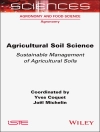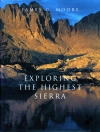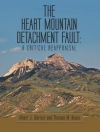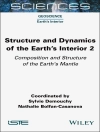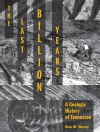Applications of remote sensing technology for monitoring and predicting water-related hazards
Water-related hazards such as floods and droughts have serious impacts on society. Their incidence has increased in recent decades, a trend set to continue with ongoing climate change. Adaptation and mitigation measures require accurate detection, monitoring, and forecasting, much of which comes from remote sensing technologies.
Remote Sensing of Water-Related Hazards takes an interdisciplinary approach, presenting recent advances in the available data, sensors, models, and indicators developed for monitoring and prediction.
Volume highlights include:
* Progress in remote sensing of precipitation, storms, and tornados
* Different techniques for flood mapping, forecasting, and early warning
* Integrated approach for predicting flood and landslide cascading hazards
* Satellite monitoring of water cycle variation, water scarcity, and drought conditions
* Multi-indicator and multi-sensor approaches for quantifying drought impacts
The American Geophysical Union promotes discovery in Earth and space science for the benefit of humanity. Its publications disseminate scientific knowledge and provide resources for researchers, students, and professionals.
Содержание
List of Contributors vii
Preface xi
1. Interdisciplinary Perspectives on Remote Sensing for Monitoring and Predicting Water-Related Hazards 1
Ke Zhang, Yang Hong, and Amir Agha Kouchak
Part I Remote Sensing of Precipitation and Storms
2. Progress in Satellite Precipitation Products over the Past Two Decades: Evaluation and Application in Flash Flood Warning 13
Guoqiang Tang, Tsechun Wang, Meihong Ma, Wentao Xiong, Feng Lyu, and Ziqiang Ma
3. Observations of Tornadoes and Their Parent Supercells Using Ground-Based, Mobile Doppler Radars 31
Howard B. Bluestein
Part II Remote Sensing of Floods and Associated Hazards
4. Remote Sensing Mapping and Modeling for Flood Hazards in Data-Scarce Areas: A Case Study in Nyaungdon Area, Myanmar 71
Ke Zhang, Zaw Myo Khaing, and Zhijia Li
5. Multisensor Remote Sensing and the Multidimensional Modeling of Extreme Flood Events: A Case Study of Hurricane Harvey—Triggered Floods in Houston, Texas, USA 87
Mengye Chen, Zhi Li, and Shang Gao
6. A Multisource, Data-Driven, Web-GIS-Based Hydrological Modeling Framework for Flood Forecasting and Prevention 105
Zhanming Wan, Xianwu Xue, Ke Zhang, Yang Hong, Jonathan J. Gourley, and Humberto Vergara
7. An Ensemble-Based, Remote-Sensing-Driven, Flood-Landslide Early Warning System 123
Ke Zhang, Guoding Chen, Yi Xia, and Sheng Wang
8. Detection of Hazard-Damaged Bridges Using Multitemporal High-Resolution SAR Imagery 135
Wen Liu, Kazuki Inoue, and Fumio Yamazaki
Part III Remote Sensing of Droughts and Associated Hazards
9. Drought Monitoring Based on Remote Sensing 151
Xin Li, Ran Tao, and Ke Zhang
10. Remote Sensing of Vegetation Responses to Drought Disturbances Using Spaceborne Optical and Near-Infrared Sensors 169
Ke Zhang, Linxin Liu, Yunping Li, and Ran Tao
11. Recent Advances in Physical Water Scarcity Assessment Using GRACE Satellite Data 187
Emad Hasan and Aondover Tarhule
12. Study of Water Cycle Variation in the Yellow River Basin Based on Satellite Remote Sensing and Numerical Modeling 203
Meixia Lv and Zhuguo Ma
13. Assessing the Impact of Climate Change-Induced Droughts on Soil Salinity Development in Agricultural Areas Using Ground and Satellite Sensors 223
Dennis L. Corwin and Elia Scudiero
Index 245
Об авторе
Ke Zhang, Hohai University, China.
Yang Hong, University of Oklahoma, USA.
Amir Agha Kouchak, University of California, Irvine, USA.






